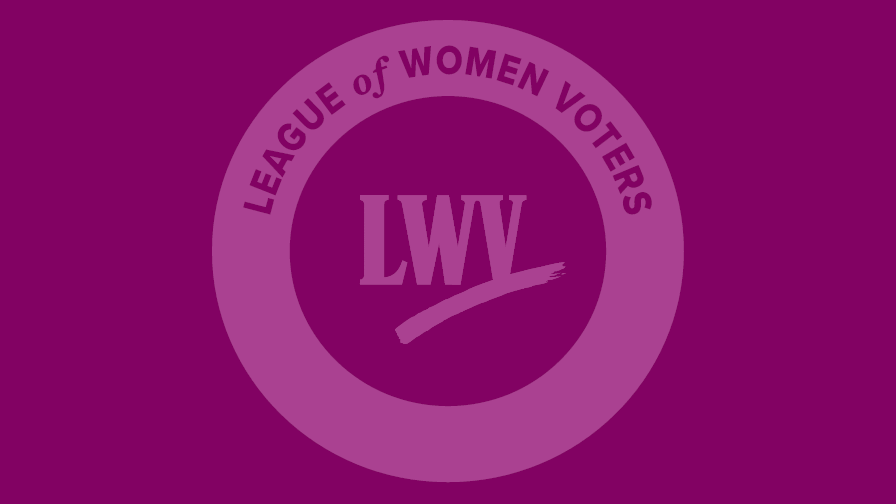League of Women Voters and Girl Scouts of the USA Partner to Empower Next Generation of Civic Leaders



The League of Women Voters Education Fund and Girl Scouts of the USA Announce Partnership to Support Civic Engagement
WASHINGTON – Today, The League of Women Voters Education Fund (LWVEF) and Girl Scouts of the USA (GSUSA) announced a new, two-year partnership that will support Girl Scouts’ Promote the Vote program and civic engagement opportunities for Girl Scouts across the country. Building on GSUSA and LWVEF’s long histories of civic engagement, the partnership will connect local Leagues and Girl Scout councils to support Girl Scout troops participating in Promote the Vote, as well as in completing civics badges, earning the Gold Award and more.
Promote the Vote Program
Promote the Vote is a national program meant to engage Girl Scouts in civics by providing them with resources and information to get out the vote and help individuals in their communities make a voting plan. Through Promote the Vote, Girl Scout troops and League of Women Voters (LWV) volunteers can write letters, send texts, and conduct outreach encouraging potential voters to go to the ballot box, which gives Girl Scouts the opportunity to get involved in the democratic process, even if they’re not of voting age.
Collaboration with LWVEF
In collaboration with the League of Women Voters Education Fund, GSUSA recently released a new version of Promote the Vote for 2024, including easy-to-use resources and a customized version of the League of Women’s Voters nonpartisan election information resource, VOTE411.org, for Girl Scouts (www.VOTE411.org/GirlScouts). VOTE411 is LWV’s one-stop-shop for all election-related information, including both general and state-specific information in English and Spanish.
Local Collaboration
Building off a long history of local collaboration between Girl Scout councils and Leagues, the partnership also includes a collaboration guide to help local Girl Scout councils and Leagues work together to achieve Civics badges, co-host nonpartisan civic events, and plan other community initiatives. All Promote the Vote resources can be found here.
Statements from LWVEF and GSUSA
“We are thrilled to partner with Girl Scouts of the USA to inspire and empower girls to understand the importance of voting and civic engagement,” said Kelly McFarland, chief of staff at the League of Women Voters Education Fund. “As a mother of two Girl Scouts, I am excited to help foster a new generation of civic-minded leaders ready to make their voices heard, engage their communities, and contribute to the democratic process.”
“We are thrilled to partner with The League of Women Voters Education Fund, an organization that aligns with our mission” said Sarah Keating, vice president of girl experience at GSUSA. “The League’s passion to empower people to advocate for themselves and others by participating in our democratic process mirrors what’s important to Girl Scouts today.”
About The League of Women Voters
The League of Women Voters is a nonpartisan, grassroots organization working to protect and expand voting rights and ensure everyone is represented in our democracy. LWV conducts pro-voter activity and civic engagement at the national, state, and local level through 750+ Leagues in all 50 states and the District of Columbia. The League of Women Voters also powers VOTE411.org, a one-stop shop for all the tools and information a person needs to make their voice heard. VOTE411 offers information in both English and Spanish and includes tools to register to vote, check your registration, learn what’s on your ballot, and more. For more information, visit LWV.org and VOTE411.org.
About Girl Scouts of the USA
Girl Scouts bring their dreams to life and work together to build a better world. Through programs from coast to coast, Girl Scouts of all backgrounds and abilities can be unapologetically themselves as they discover their strengths and rise to meet new challenges—whether they want to climb to the top of a tree or the top of their class, lace up their boots for a hike or advocate for climate justice, or make their first best friends. Backed by trusted adult volunteers, mentors, and millions of alums, Girl Scouts lead the way as they find their voices and make changes that affect the issues most important to them. To join us, volunteer, reconnect, or donate, visit girlscouts.org.
###
SDGs, Targets, and Indicators
1. Which SDGs are addressed or connected to the issues highlighted in the article?
- SDG 5: Gender Equality
- SDG 10: Reduced Inequalities
- SDG 16: Peace, Justice, and Strong Institutions
2. What specific targets under those SDGs can be identified based on the article’s content?
- SDG 5.5: Ensure women’s full and effective participation and equal opportunities for leadership at all levels of decision-making in political, economic, and public life.
- SDG 10.2: By 2030, empower and promote the social, economic, and political inclusion of all, irrespective of age, sex, disability, race, ethnicity, origin, religion, or economic or other status.
- SDG 16.7: Ensure responsive, inclusive, participatory, and representative decision-making at all levels.
3. Are there any indicators mentioned or implied in the article that can be used to measure progress towards the identified targets?
- Indicator for SDG 5.5: Percentage of women in leadership positions in political and public life.
- Indicator for SDG 10.2: Proportion of the population reporting having personally felt discriminated against or harassed in the previous 12 months on the basis of a ground of discrimination prohibited under international human rights law.
- Indicator for SDG 16.7: Proportion of population who believe decision-making is inclusive and responsive, by sex, age, disability, and population group.
SDGs, Targets, and Indicators
| SDGs | Targets | Indicators |
|---|---|---|
| SDG 5: Gender Equality | 5.5: Ensure women’s full and effective participation and equal opportunities for leadership at all levels of decision-making in political, economic, and public life. | Percentage of women in leadership positions in political and public life. |
| SDG 10: Reduced Inequalities | 10.2: By 2030, empower and promote the social, economic, and political inclusion of all, irrespective of age, sex, disability, race, ethnicity, origin, religion, or economic or other status. | Proportion of the population reporting having personally felt discriminated against or harassed in the previous 12 months on the basis of a ground of discrimination prohibited under international human rights law. |
| SDG 16: Peace, Justice, and Strong Institutions | 16.7: Ensure responsive, inclusive, participatory, and representative decision-making at all levels. | Proportion of population who believe decision-making is inclusive and responsive, by sex, age, disability, and population group. |
Source: lwv.org








